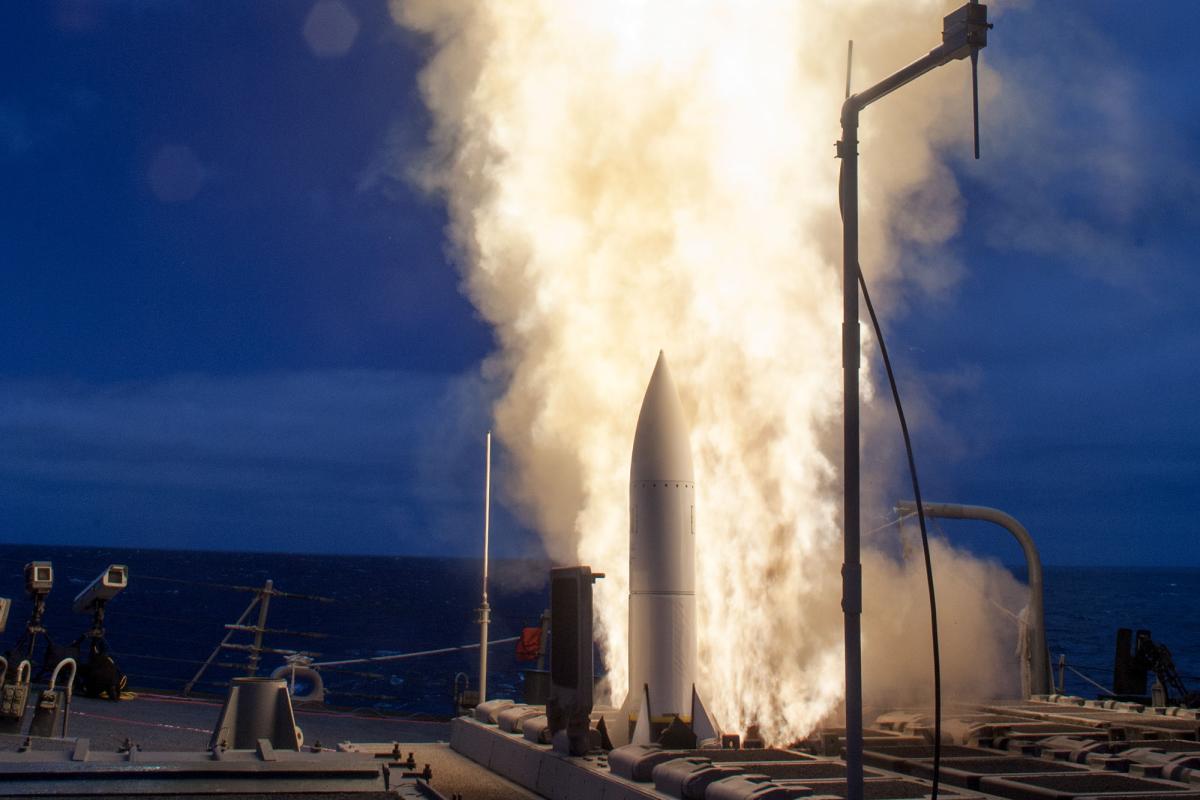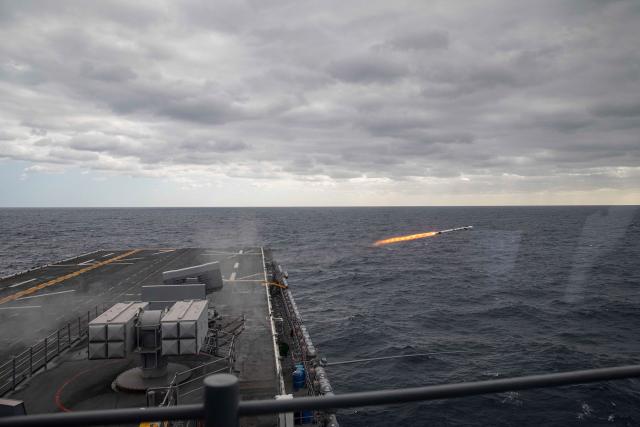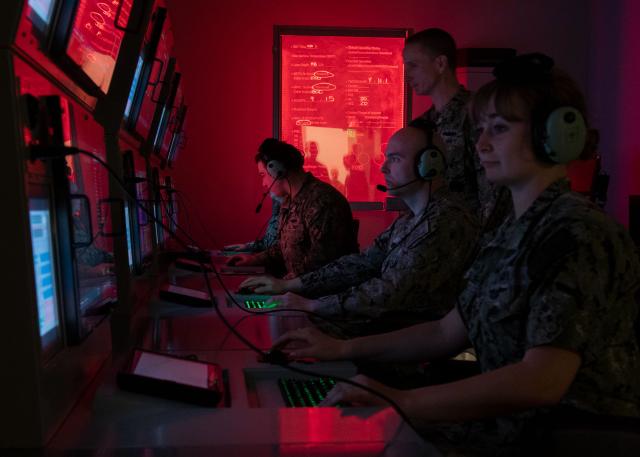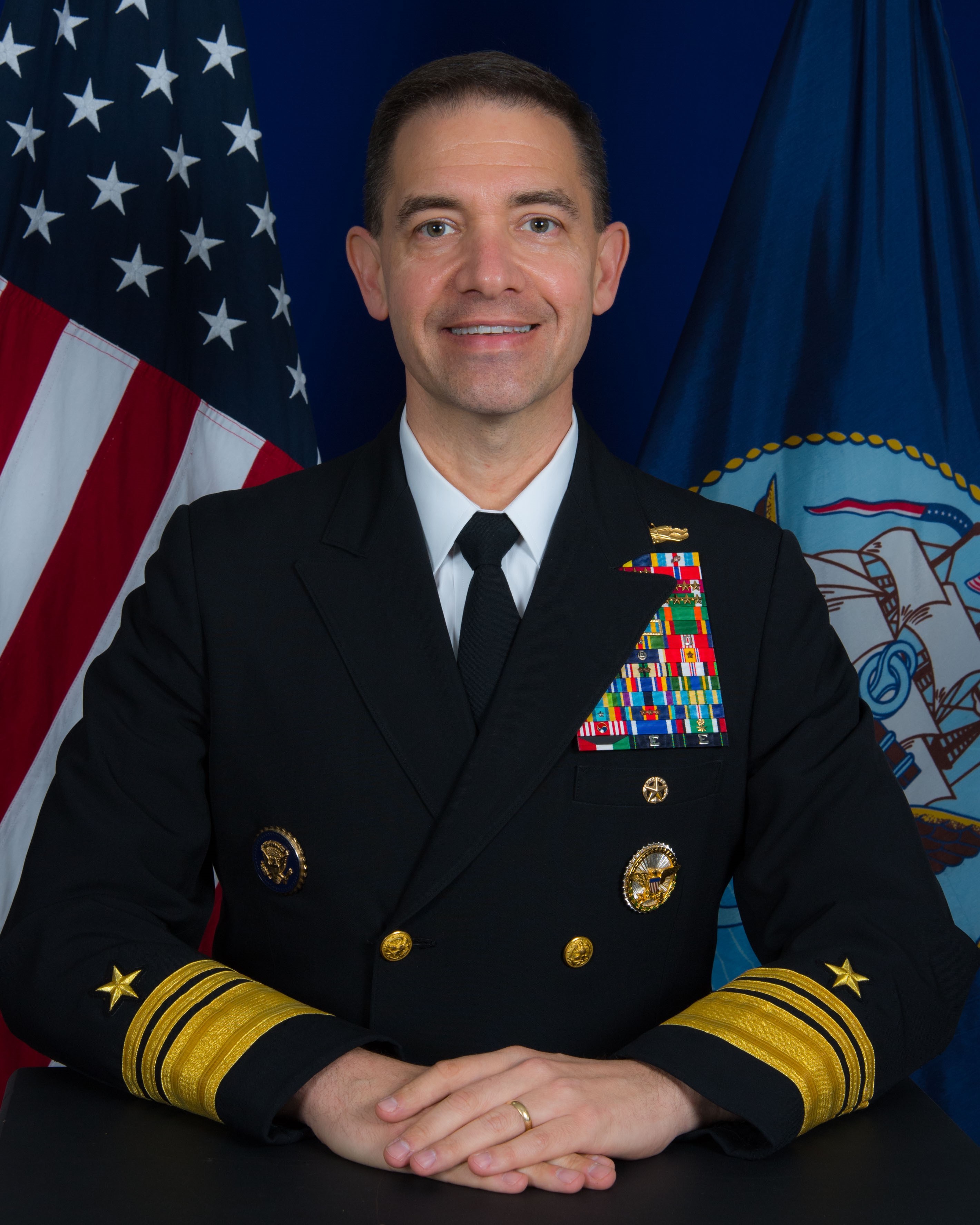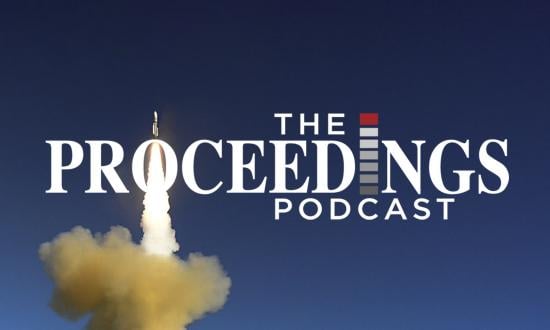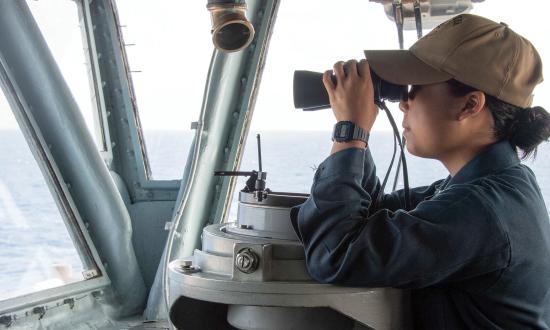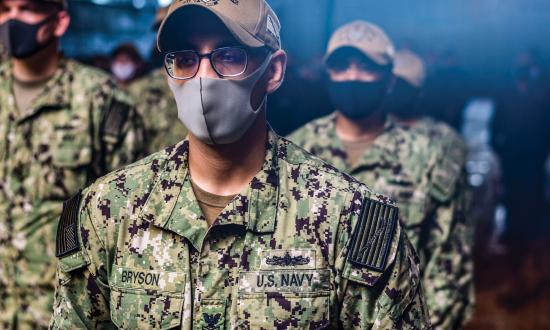In the cradles of surface warfare, junior officers learn about the actions and genius of Vice Admiral Lord Horatio Nelson. During the October 1805 Battle of Trafalgar, Nelson faced a superior combined force of French and Spanish warships. Outnumbered 33 ships to 27, he pulled off a stunning victory—sending one enemy ship to the bottom and capturing 21 without a single British ship lost. The outcome, however, is less important than how Nelson was able to achieve his final victory. The real genius was that Nelson was able to set the conditions for his victory during training: by prioritizing decentralized command and control; increasing firing rates; and challenging tactical orthodoxies. Nelson dismissed standard formations. He drove his formations under full sail at right angles directly into the enemy’s broadside. Where traditional tactics required a surgeon’s scalpel, Nelson brawled with the precision of a club. He knew conventional tactics were not adequately matched to his contemporary problem, and he evolved to the threat.
Today, as in Nelson’s day, the face of conflict is changing. In this new era of great power competition, the Navy must focus on defeating peer threats. Would-be adversaries are focusing on increasing the size of their forces and developing technologies to defeat their vulnerabilities to our systems. As Nelson did, we must be prepared to challenge ingrained notions of surface warfare tactics. Even more important, we must acknowledge the critical relationship peacetime training has to victory at sea.
A key to deterring great power adversaries is to demonstrate the ability to win the high-end fight. Our tactics must exceed the best our adversaries can muster, which means our training must adapt. High-End-Fight Tactical Training (HEFT2) is our opportunity to challenge orthodox notions of how ships prepare to go down range.
Shifting the Fleet’s Mind-set
The high-end fight is an all-domain effort. Surface warfare is a key piece of the Navy’s team effort, and, on the training front, we have been moving quickly. Evolutionary changes are already taking place in our schoolhouses and fleet training. As a goal, schoolhouse training for sailors must pace combat systems modernization. As of January 2020, a ship’s basic phase training and certifications culminate in a final battle problem that pulls multiple mission areas into a crew’s first complex combat scenario. The Surface Maritime and Mine Warfare Development Center (SMWDC) runs ships’ watch teams through their paces with a month of Surface Warfare Advanced Tactical Training (SWATT), consisting of classroom instruction and practical application of tactics, techniques, and procedures needed for mission tasking. During predeployment training and certification events, Carrier Strike Groups 4 and 15, along with the Tactical Training Groups, enable strike group warfighting development and stress combat teams with iterative exercises and live, virtual, and constructive (LVC) simulator injects into a ship’s embedded training systems. This year’s large-scale exercise (LSE 2021) and fleet battle problems (FBP) will provide additional, high-end training at sea against a challenging red force.
Advanced Tactical Training (SWATT) in October 2020. (U.S. Navy photo by Larry Lockett, Jr.)
We recognize and applaud the several sweeping changes that have taken place in the past few years to prepare our forces for combat. However, if we rest on these laurels and try only to meet the challenges of today, we will fail to achieve victory tomorrow. Hence, 2021 will be a busy year as we continue to improve the force with an eye on the high-end fight—including the training it will take to get us there.
From a surface warfare community perspective, several themes and efforts are driving our training for 2021:
Every SWO a Warfighter. In summer 2021, the Advanced Division Officer Course (ADOC) will transition much of its curriculum to a warfighting focus. Junior officers, between their first and second division officer tours, will complete three weeks of advanced maritime warfare training, including wargaming and tactical scenarios, in the same combat simulators used by department head students. This means every second-tour division officer returning to the fleet will have the skills required to think critically and be a strong member of their ship’s combat team. Navigation, seamanship, and shiphandling (NSS) will remain the bedrocks of our enterprise; in 2021, junior officers will get more high-quality mariner training than ever before with the addition of the officer-of-the-deck phase 1 and 2 courses. What we value as a community, we make time for. Advanced tactical training, provided at ADOC and on board our ships, will be the foundation poured over the NSS bedrock. Junior officers are smart, and they are hungry for advanced tactics.
Learn to Employ the Weapons of the Future. Starting with a pilot effort in 2021, the Center for Surface Combat Systems (CSCS) will introduce something long overdue—an offensive surface warfare course. Emerging technologies are coming online that will enable our ships to be more offensive than ever before. Building on the existing Cruise Missile Command Course, the Surface Weapons Tactics Course will focus on the weapons of the future, namely, Standard Missile 6 (SM-6), Naval Strike Missile, air platforms, and joint fires. Following three weeks of rigorous antisurface warfare training, students can expect a culmination event with a surface action group v. surface action group scenario. The new Surface Weapons Tactics Course will focus on employing those weapons and holding our adversaries at risk, at range, with lethal consequences.
Simulate High-End Warfighting. A key focus in our cultural shift is CSCS’s latest simulator, the Combined Integrated Air and Missile Defense/Anti-Submarine Warfare Trainer (CIAT). The first CIAT opened in San Diego in December 2018, and a second in Norfolk opened in July 2019. These trainers offer the highest fidelity, most adaptable AEGIS combat training to date. Based on current AEGIS Baseline 9 architecture and incorporating the AV-15 sonar suite, CIAT has the same consoles in multiple mission areas and the same command-and-control networks and electronic warfare suites that ship combat teams have on their ships. Every detail is accounted for, from the familiar chilled dark space to the sound of an SM-2 leaving the launcher. Simulations can be changed during an exercise by staff and instructors to respond to team actions—much like a thinking, reacting enemy. These simulators raise the complexity to simulate high-end battle problems in real time. Using state-of-the-art commercial-off-the-shelf hardware, the potential for CIAT expansion and upgrades is limitless.
Defense (IAMD)/Antisubmarine Warfare Trainer (CIAT) in San Diego. These trainers provide
realistic training for ships' crews on the same system displays they use under way. (U.S. Navy
photo by Kevin Leitner.)
Smaller simulators also are being built with existing trainer technology to provide advanced combat team training at all fleet concentration areas. Starting in 2021, Aegis Virtual Operator Task Trainers (AVOTT) will be installed in Rota, Spain, and Yokosuka, Pearl Harbor, Mayport, Everett, Norfolk, and other homeports will follow. The anti-submarine warfare (ASW) VOTTs will arrive in San Diego and Pearl Harbor in 2021, followed by other fleet concentration areas in coming years.
Using existing LVC capacity, we are evolving unit-leveling training, finding new ways to seize on the great work done by the fleets to bring LVC training to sea. In 2021, we will pursue further use of LVC in the basic phase to continue to expand watch team proficiency and combat readiness.
Reintroduce Tactical Training for the Enlisted Force. For the first time, the surface force is formalizing the training pipeline for enlisted combat warfare leads. In May 2021, CSCS will pilot the Warfare Coordinator Course, focused on the senior enlisted sailors who stand demanding supervisory and master-level combat watches. This is the modernization of a course—Ship Warfare Tactical Applications—that has existed for decades but grew stale and was underutilized. Targeting E-6s, chiefs, and division officers, this course will introduce students to weapons systems employment, ship and aircraft capabilities and limitations, threat-centric planning, and an all-warfare area review. Building on years of their on-the-job training, this course will ensure senior enlisted watch standers have the knowledge and skills needed to lead a warfare area in the high-end fight. The initiative also nests with the direction our Navy is going with Ready, Relevant Learning (RRL) – a deliberate approach that develops sailors from Apprentice to Journeyman to Supervisor to Masters in their ratings.
Train for the High-End Fight. Time is a resource, and how we prioritize reflects our values. It is time to prioritize training for the high-end fight. We must acknowledge that “what got us here won’t get us there,” and modernize the way in which crews are prepared for war at sea. Training must be adapted to match theater-specific threats that crews may see in their operational battlespace, and it must be more than injecting near-peer threats into our training curricula.
One example of how high-end tactical training is being retooled is on board the USS Arleigh Burke (DDG-51), which will be the first ship to complete an evaluated high-end battle problem exclusively in the CIAT lab—later this month. During her battle problem, the Arleigh Burke will face the most sophisticated threats today, and her final event will include a combined air and subsurface problem involving her entire combat watch team. This will be an important milestone as we begin to use labs like CIAT as a synthetic, highly realistic alternative to precious underway time.
Empower Commanding Officers (CO). Based on the success of the Arleigh Burke’s trial in January, it may be possible to conduct tactical certifications in labs such as the CIAT in the future. Right now, these labs give unit commanders the freedom to increase the frequency of tactical training for their combat teams and maintain proficiency during maintenance periods when skills atrophy most. As training facilities such as CIAT become available in different combat system configurations, COs will be able to use deployment-experienced crew members to train new personnel, minimizing the time-consuming “crawl” events for ships exiting the yards. COs will be able to resequence and tailor training to meet their crews’ needs with a synthetic construct updated to an evolving adversary threat. LVC tools like the ones that now enable COs to train their bridge teams are arriving to sharpen their edge in CIC.
In addition, to optimize watch bills and address tactical shortfalls, SMWDC is leading the development of the Surface Warfare Combat Training Continuum (SWCTC)—a tactical education continuum that captures the experience each sailor gains through pipeline instruction, shipboard training, and real-world operations. SWCTC will run on the Surface Force Training and Management System, a big-data system that will consolidate information available from several existing networks (such as TORIS, FLTMPS, R-ADM, and CeTARs) to provide a single user-focused interface. The purpose of SWCTC is not to create new training paths, but to integrate what exists and offer the surface warfare enterprise, including ship COs, a means by which to standardize tactical performance as they prepare crews for combat operations.
Prioritize Tactical Development in Our Best Officers. Since SMWDC’s warfare tactics instructor (WTI) program was introduced, it has become a force multiplier in preparing ships’ crews for the high-end fight. WTI’s execute the surface force’s SWATT events, develop and refresh tactical instructions, and lead combat watch teams on board almost every ship. Demand for their skills has outpaced inventory, and SMWDC is looking for ways to “grow” more of these tactical subject-matter experts. We are exploring models in which top-performing junior officers are designated WTIs and guaranteed graduate education, likely through a partnership with the Navy Postgraduate School.
Sink the Adversary. Surface Development Squadron One in San Diego has a number of initiatives under way that focus on bringing lethal fires to bear against our adversaries. As these concepts mature, the tactics development, training, and application will follow. Stand by for more news later this year.
As our surface force continues to adapt to great power competition, we are taking a positional fix. Are we where we thought we were? Are we behind our plan of intended movement (PIM)? Are we thinking like Nelson at Trafalgar—or like those he defeated?
We are on track, but just like PIM, a ship moving too slowly will be overtaken in the night. We must continue to push ourselves and challenge the status quo in our training. We must use all the tools and technology at our disposal to keep our crews—from enlisted watch standers to commanding officers—razor sharp. It is our duty to ensure we are ready for tomorrow.



